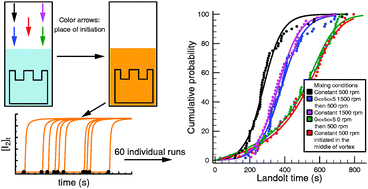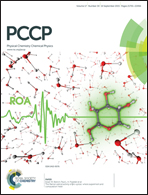Initial inhomogeneity-induced crazy-clock behavior in the iodate–arsenous acid reaction in a buffered medium under stirred batch conditions†
Abstract
It is unambiguously demonstrated that in the case of an autocatalytic reaction, initial inhomogeneities induced by the imperfectly mixed part of the overall volume may result in a serious irreproducibility of the individual kinetic runs. A statistically meaningful number of repetitions, however, gives rise to a reproducible cumulative probability distribution curve often referred to as a support of the stochastic feature. The iodate–arsenous acid reaction being autocatalytic with respect to both iodide and hydrogen ions displays clock behavior. However, the time lag necessary for the appearance of iodine, even in buffered solution, varies in an apparently random manner. Careful analysis of the variation of the different parameters like stirring rate, overall volume, geometry of the reactor and the way of mixing the reactants led us to conclude that the fate of the individual samples is determined at the initial stage when the reacting system is per se inhomogeneous. The place, the size of the so-called ignition volume, where the reacting system is imperfectly stirred, as well as the residence time spent there by the imperfectly mixed reactants all seem to depend on external factors.


 Please wait while we load your content...
Please wait while we load your content...